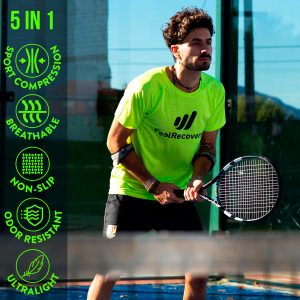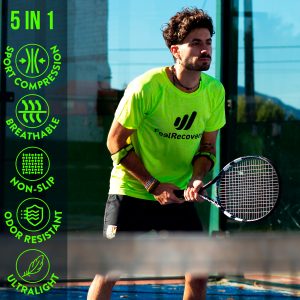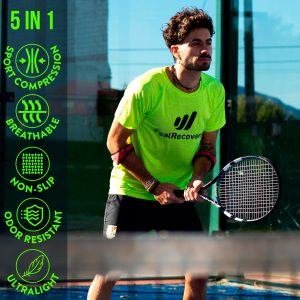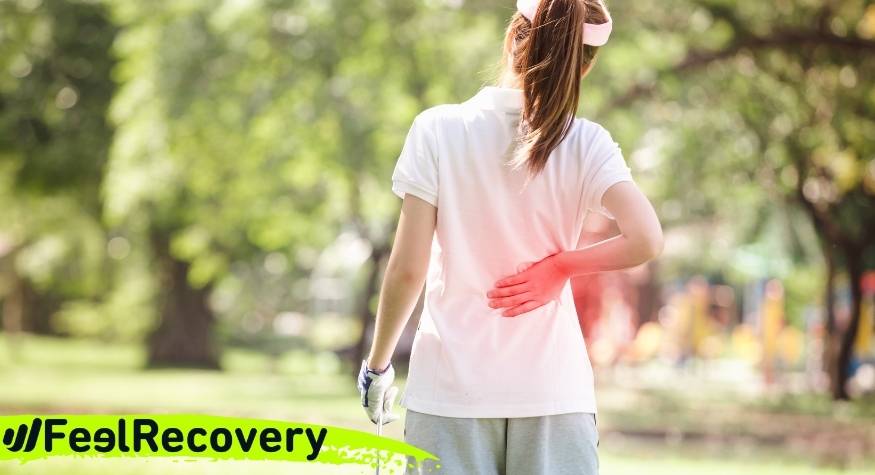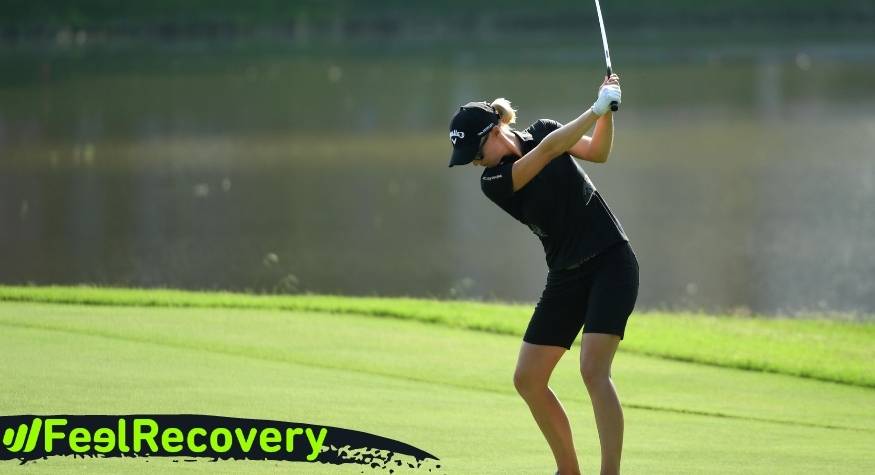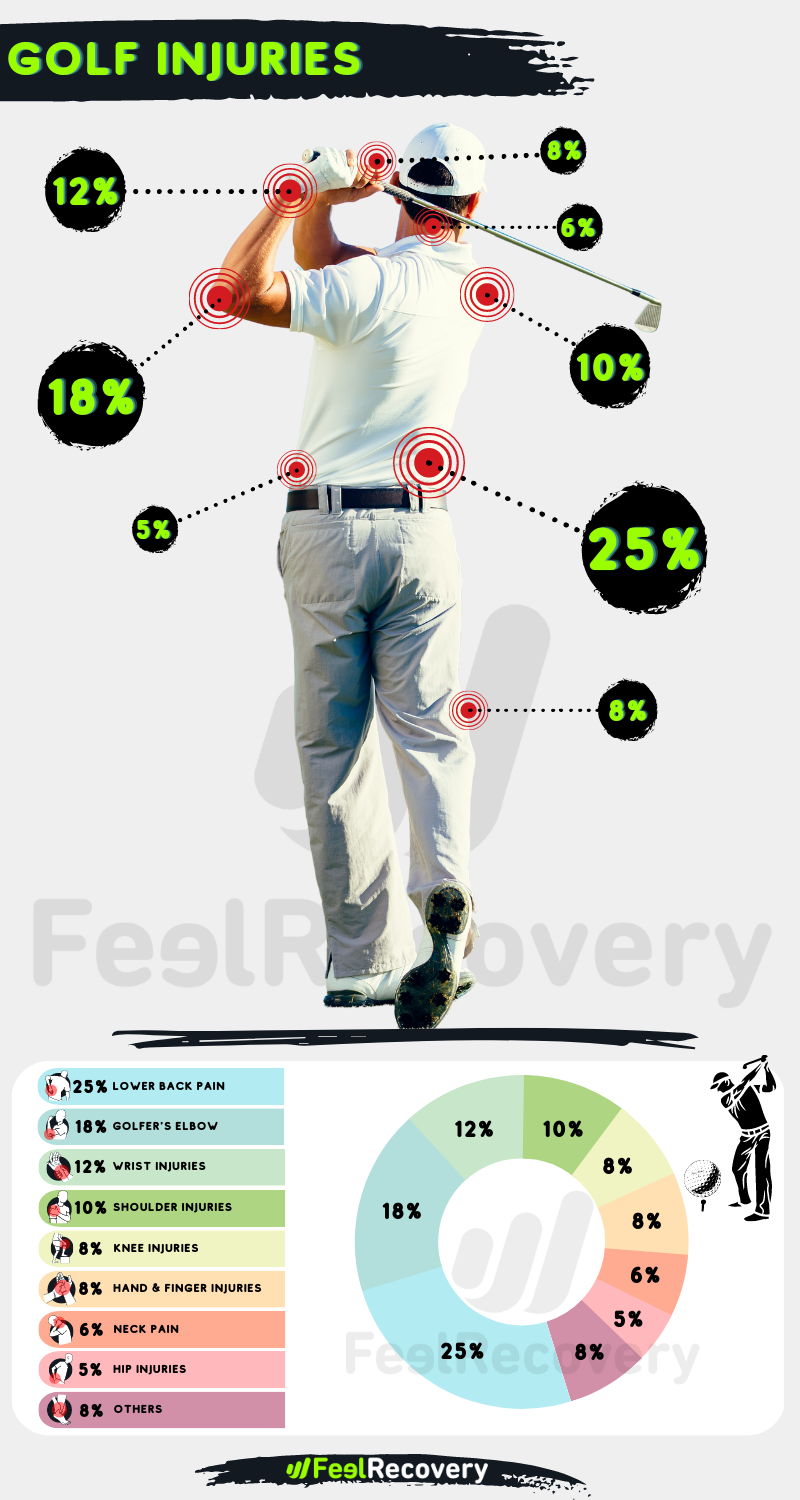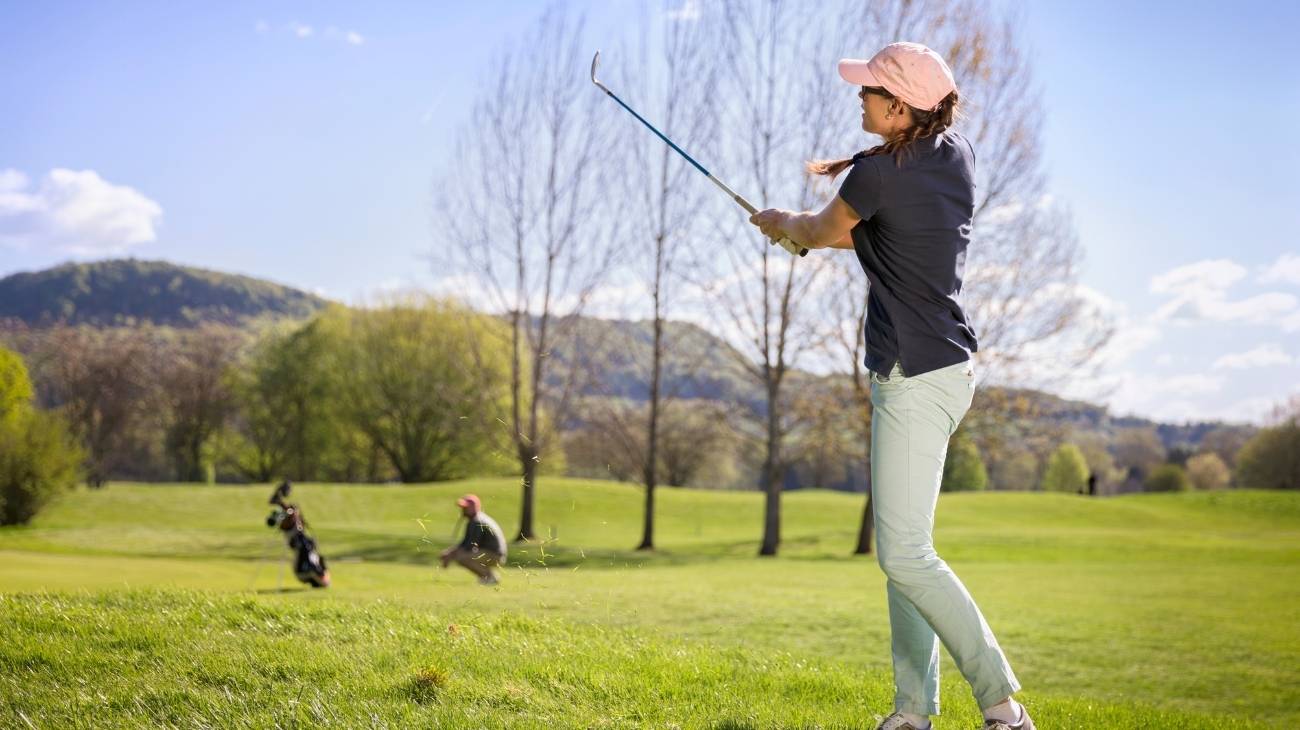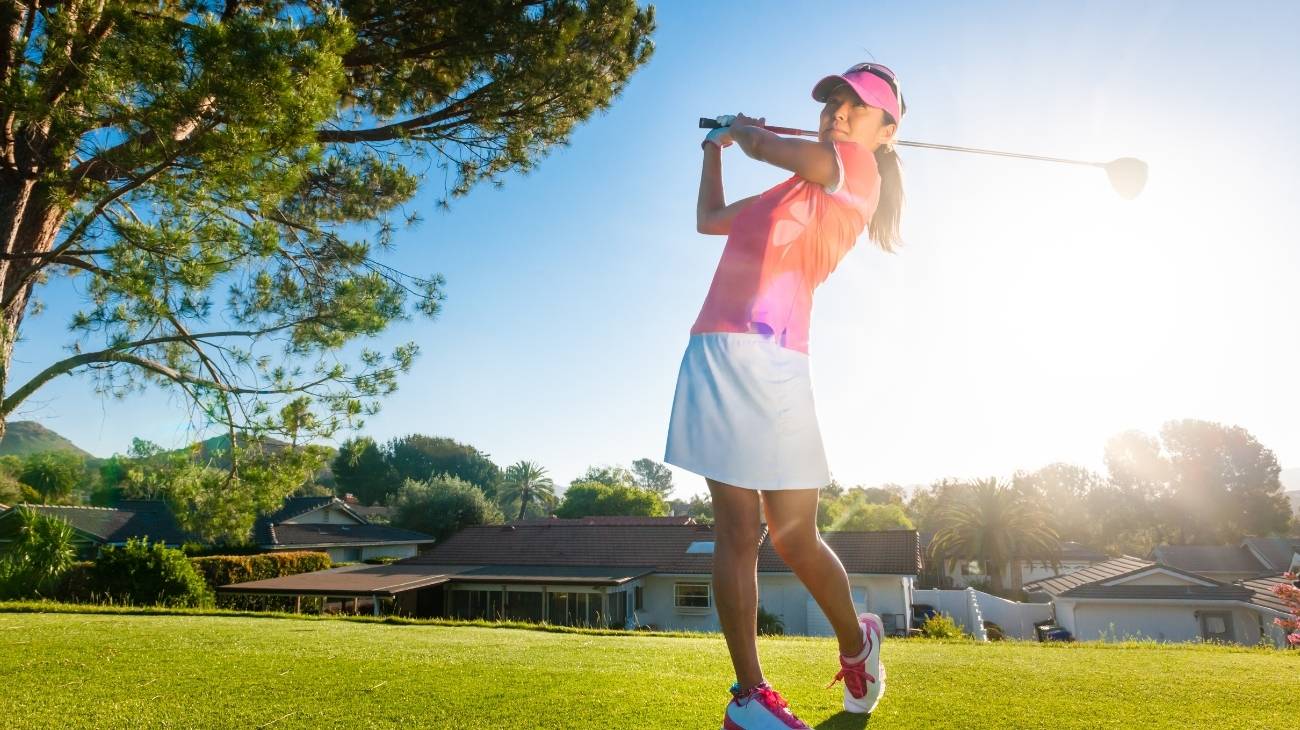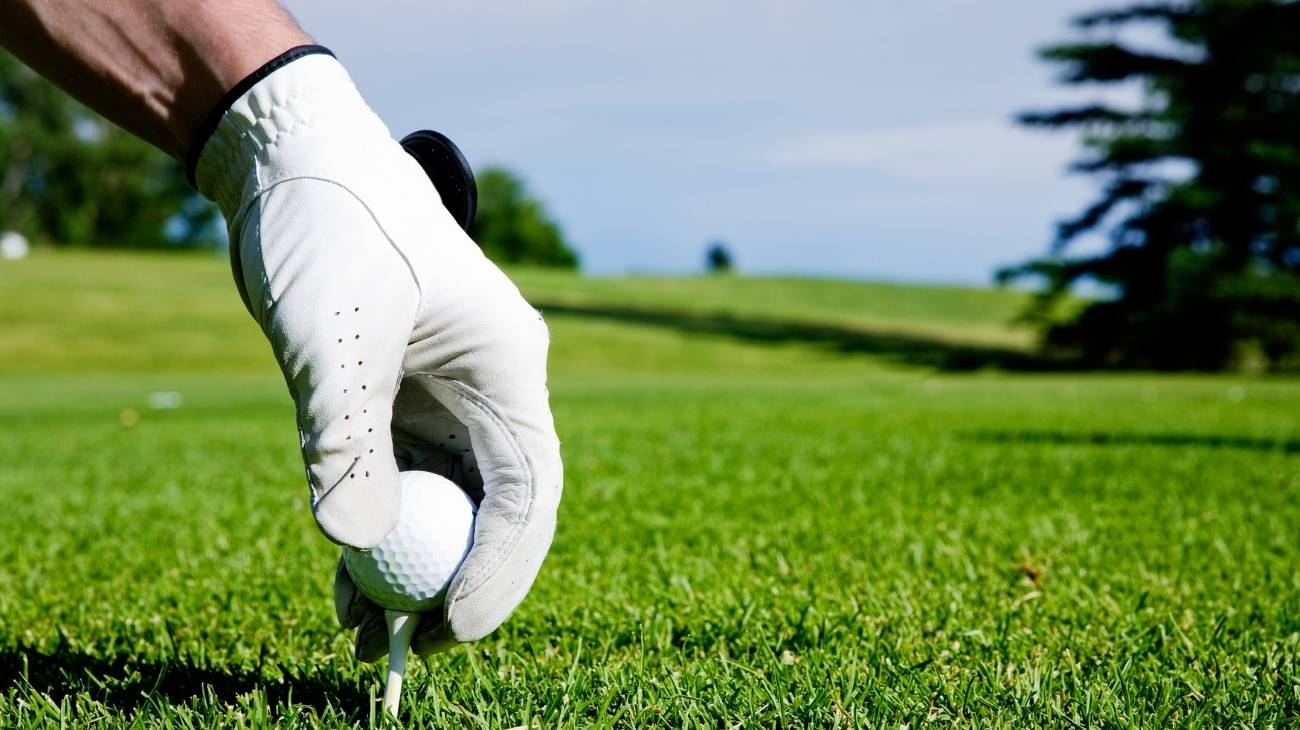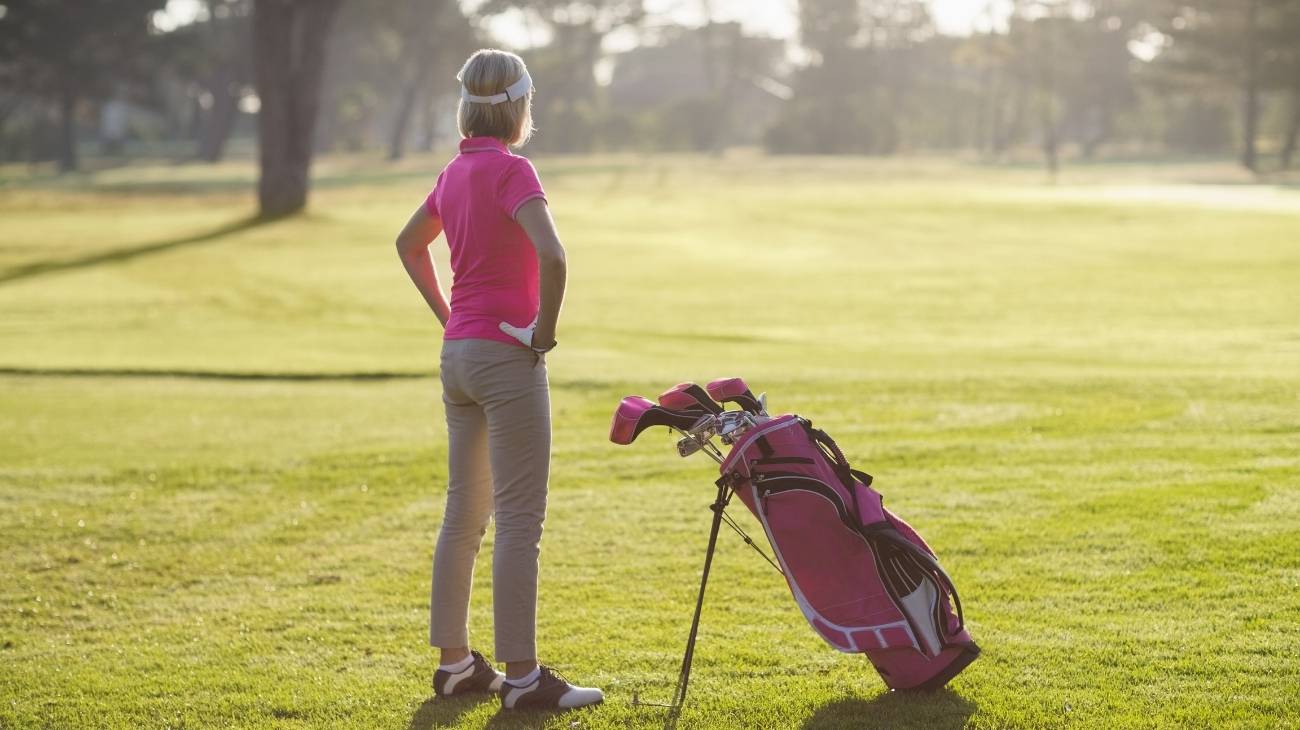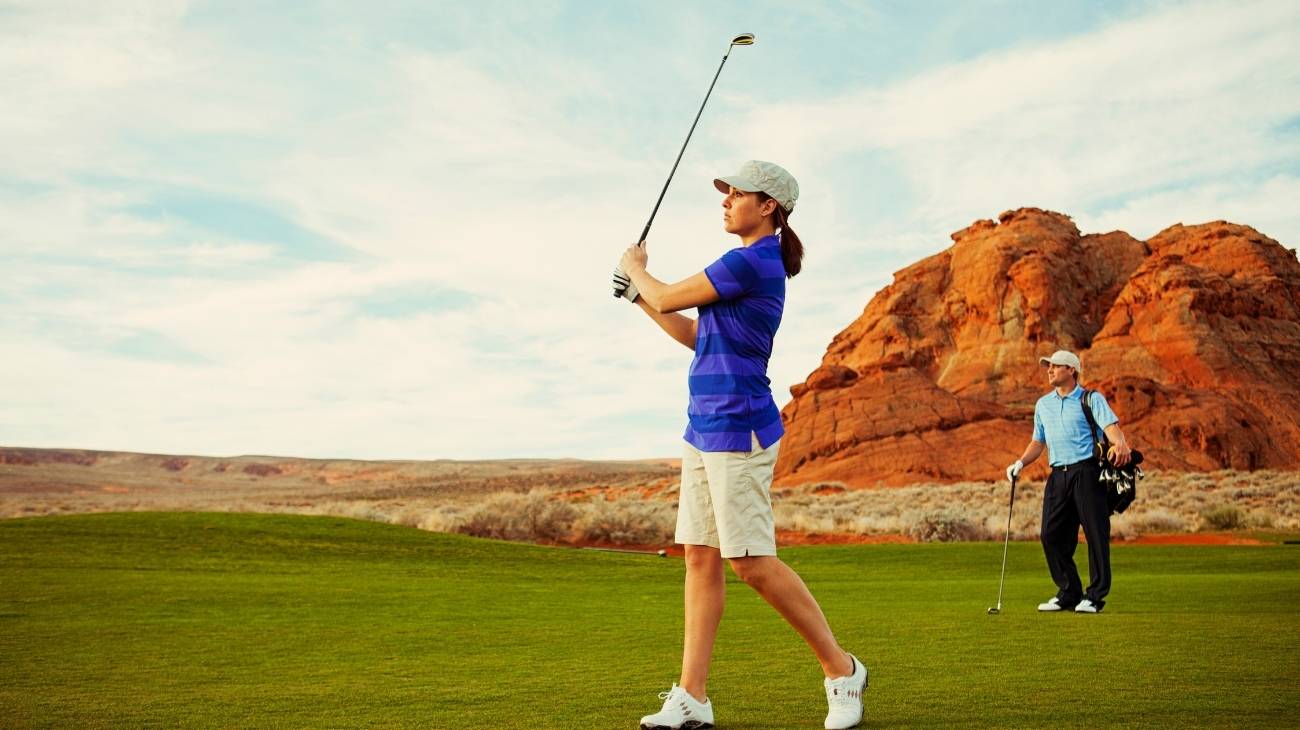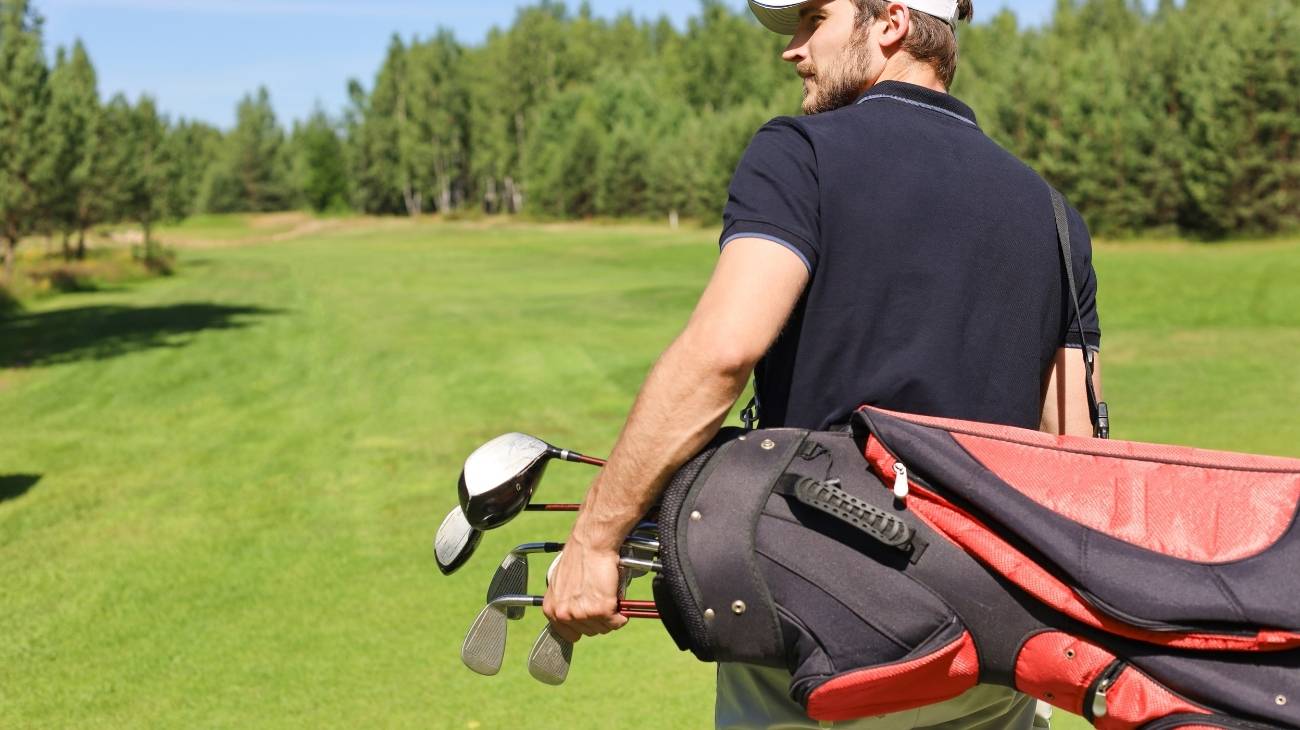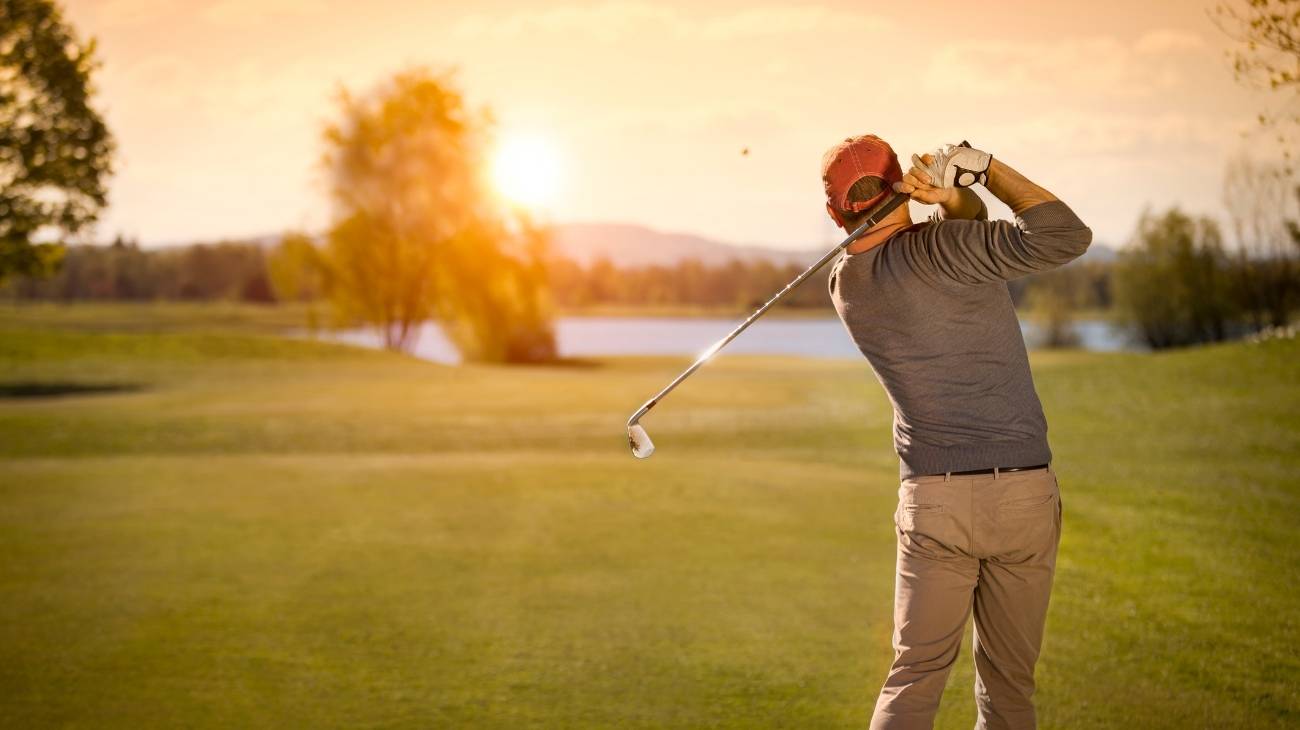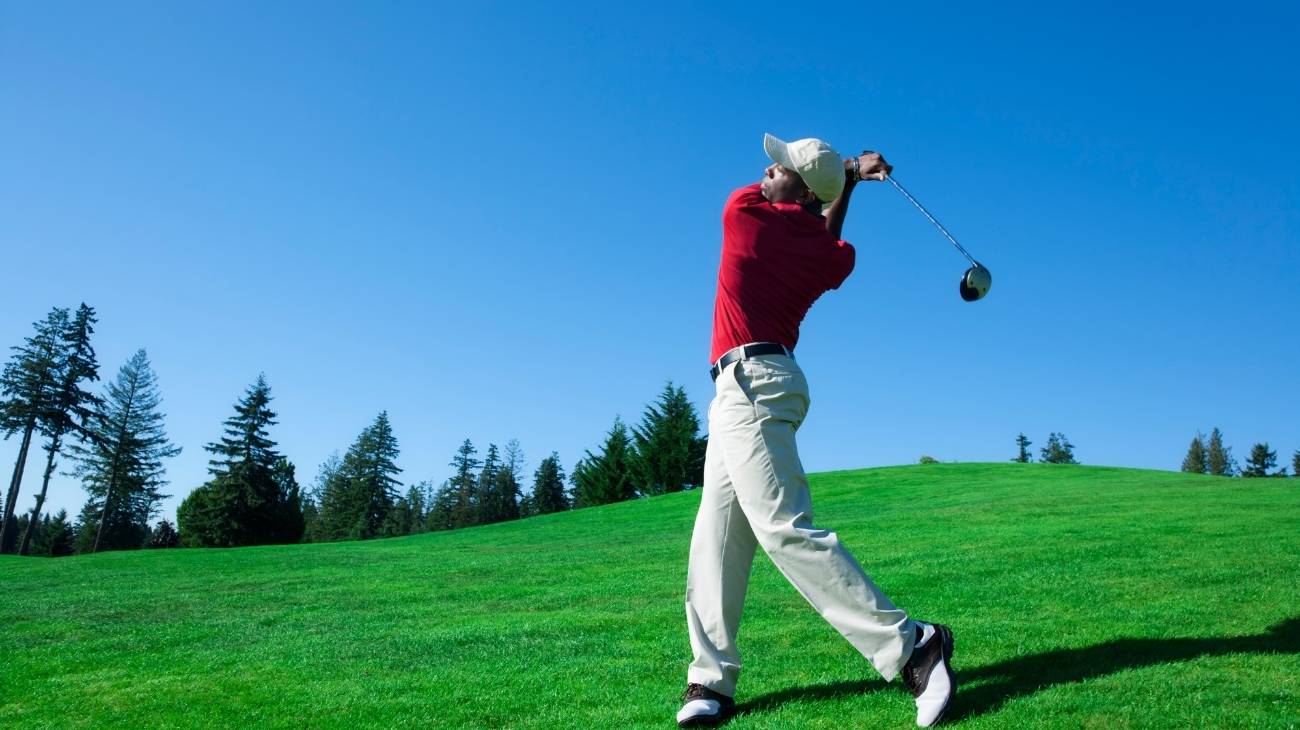Golf injuries are due to three main factors: poor swing technique, excessive playing without proper rest and the presence of a history of previous injuries. In addition, injuries are more prevalent in men than in women.
We show you a complete list of the most common types of golf injuries, how to prevent injuries when training and playing this technical and precision sport, and how you should apply the PRICE therapy to address discomfort in the first few minutes of an incident.
What are the most common types of injuries when playing golf?
As a curious fact, when you play for fun in good company, the probability of suffering injuries increases by 34%, as amateur golfers and amateurs are the ones who execute the swing with the worst technique. In professional players it is different and they only have a 24% risk of injury.
We proceed to show you the most common injuries that a golfer can suffer:
Shoulder injuries
The shoulders are essential in this sport as they provide the precision needed to hit the ball where we want it to go, something very difficult to achieve. Some of the most common injuries are:
- Rotator cuff tendonitis: Occurs when we perform repetitive movements with poor swing technique, causing the tendons and ligaments in the joint to become irritated and inflamed. Remember that the swing is an explosive movement that brings power from the whole body to the tip of the club.
- Partial dislocations: The most common dislocation in golf is the anterior dislocation, which occurs when the humerus moves to the front of the joint. When the tendons are torn and worn, the force exerted by the shoulder causes it to partially dislocate, a full dislocation is unlikely.
Elbow injuries
Like the shoulder, the elbow often suffers many problems due to poor technique in hitting the ball with the club. The most common injuries we can identify are:
- Golfer's elbow: The pain in this injury is generated by extending and flexing the elbow, which prevents the golfer from playing for several days. It occurs when the tendons in the forearm become inflamed and irritated and is an ailment that requires immediate rest in order to heal quickly or it can become a chronic condition.
- Biceps tendonitis: this muscle has two tendons that connect it to the elbow and shoulder, and when either of them becomes inflamed due to repetitive movements and poor swing technique, it generates pain and inflammation that will limit the golfer's capabilities, requiring rest for several days before returning to play a match.
Hand and wrist injuries
Many injuries tend to occur in the hands and wrists as they are the ones that absorb the impact generated by the club when hitting the golf ball. Some of the most common injuries that can be identified are the following:
- Carpal tunnel syndrome: This tissue is important for the strength and stability of the thumb when gripping the golf club. The injury occurs when the median nerve that runs through the wrist becomes inflamed. It starts with spasms in the hand, then pain when trying to hit shots until it affects your daily life. Repair surgery is the most recommended solution.
- Sprained fingers: Although the ligaments are tough, they also tear when the transfer of energy in the stroke to the ball is incorrect. And if there is a history of hand injuries, the possibility increases. Knowing how to grip the club, although it may seem simple, is a technique that will prevent most finger injuries.
- Wrist strain: Wrist strain is the inflammation of muscles, tendons and ligaments in the wrist from the twisting it is exposed to in golf. Missed shots cause the player to quickly lose concentration on his technique, until the joint is injured, affecting all its soft tissues.
Lower back and lumbar injuries
The lower back is usually one of the areas of the body that causes the most problems for golfers as it is where the secret of the swing is found in order to give the desired power to the swing. At this point we can identify more delicate injuries such as the following:
- Herniated discs: This is when one or more discs in the lower back slip out of place and put pressure on the nerves. You may not feel discomfort at first, but the herniation exists, until a sudden movement triggers the pain and the injury needs to be checked.
- Muscle contractions: Short, explosive movements in golf easily cause the muscles to remain involuntarily contracted. It is a more recurrent injury in casual players because they do not warm up properly.
- Lumbago: This is the name given to all pain located in the lower back. There are several causes for them, such as muscular overload of the lumbar muscles from playing golf without having previously rested, or a strain from making a swing with bad technique. In any case it is a localised and acute pain that will require rest for several days.
Hip injuries
The hip has a similar function to the lower back; to give the trunk a good twist so that the inertia of the trunk is successfully transferred to the golf club when hitting the ball, so that it reaches further. This requirement causes it to suffer from injuries such as:
- Adductor tendonitis: It is common to have pain in the hip when there is an excess of force in the adductor muscles. The adductors are a group of muscles that bring the leg to the middle of the body. When they become inflamed there is stiffness in the hip and pain when you turn. Hip complaints require complete rest and lying down.
- Hip bursitis: The golf swing is a movement that can be repeated more than 70 times in an 18-hole match. This repetition and applied force causes the hip bursa to become inflamed and painful. The bursa is a fluid-filled sac that reduces friction in the joints and acts as a shock absorber.
Knee injuries
Finally we have the knees that are responsible for giving stability to the whole swing movement so that the ball takes the direction we want after hitting it. This generates tension that can cause injuries such as the following:
- Knee sprain: If the knees are not steady during a swing, the inertia of the motion can cause us to lose stability and sprain our knees, which could cause anything from a micro-tear to a complete tear of the cruciate or lateral ligaments of the knee. This will generate a lot of pain and swelling, which will send us directly to the physiotherapist to treat the injury and see the depth of the damage.
- Cruciate ligament rupture: the cruciate ligaments are usually the ones that suffer the most in the knee. If after a swing with bad technique we suffer a pronounced sprain, they can rupture and cause a serious injury that will send us directly to a rehabilitation of more than 3 months. It happened to Tiger Woods in 2008, but it is the amateurs who suffer the most from it.
Best products for golf injury recovery
Bestseller
-
2 Elbow Compression Sleeve (Black/Gray)
£20,95 -
2 Elbow Compression Sleeve (Green/Navy)
£20,95 -
2 Elbow Compression Sleeve (Pink/Bordeaux)
£20,95 -
2 Knee Compression Sleeve (Black/Gray)
£20,95 -
2 Knee Compression Sleeve (Green/Navy)
£20,95 -
2 Knee Compression Sleeve (Pink/Bordeaux)
£20,95 -
Microwave Wheat Bag for Back Pain Relief (Extra Large) (Hearts)
£24,95 -
Microwave Wheat Bag for Back Pain Relief (Extra Large) (Oxford)
£24,95 -
Microwave Wheat Bag for Back Pain Relief (Extra Large) (Sport)
£24,95 -
Microwaveable Wheat Bag for Pain Relief (Hearts)
£20,95 -
Microwaveable Wheat Bag for Pain Relief (Oxford)
£20,95 -
Microwaveable Wheat Bag for Pain Relief (Sport)
£20,95 -
Sacroiliac Support Belt (Green)
£24,95 -
Shoulder Support Brace (Black)
£24,95 -
Shoulder Support Brace (Green)
£24,95 -
Shoulder Support Brace (Pink)
£24,95
-
2 Tennis Elbow Brace (Black/Gray)
£12,95 -
2 Tennis Elbow Brace (Green/Navy)
£12,95 -
2 Tennis Elbow Brace (Pink/Bordeaux)
£12,95 -
Back Support Belt (Black)
£39,95 -
Back Support Belt (Green)
£39,95 -
Back Support Belt (Pink)
£39,95 -
Foot Massage Roller for Plantar Fasciitis (Black)
£20,95 -
Foot Massage Roller for Plantar Fasciitis (Green)
£20,95 -
Foot Massage Roller for Plantar Fasciitis (Pink)
£20,95 -
Ice Massage Roller Ball (Black)
£34,95 -
Ice Massage Roller Ball (Green)
£34,95 -
Ice Massage Roller Ball (Pink)
£34,95 -
Sacroiliac Support Belt (Black)
£24,95 -
Sacroiliac Support Belt (Pink)
£24,95 -
Soft Density Foam Roller for Recovery (Black)
£34,95 -
Soft Density Foam Roller for Recovery (Green)
£34,95 -
Soft Density Foam Roller for Recovery (Pink)
£34,95
How to prevent injuries when playing golf?
It is important to learn how to prevent injuries because when they are repetitive, the affected area is likely to be more susceptible to recurrence. Special care should be taken in cases of sprains and fractures.
Here are the most effective methods of prevention:
- Warm up well: Whether you are a casual or professional player, a good warm up is always a good way to prevent injuries. Give movement to all joints such as the neck, knee, hip, shoulders, elbows, wrists and ankles. It only takes a few minutes to wake up all the tissues that were dormant. Warming up accelerates your heart rate, lung capacity and improves elasticity.
- Finish your workout with a cool down: After an 18-hole match, it is recommended that you slowly stretch your limbs again. Bring the arms back and forth; likewise with the legs, the fibres of the thigh and calf should relax to start the recovery and be ready for a new day. A good cool down will return the body's vital signs to their normal state, no matter how long you have been training.
- Good nutrition and hydration: Nutrition should be balanced and contain a both proteins, fats and carbohydrates and above all minerals such as zinc or magnesium that strengthen and promote muscle recovery after physical activity. Hydration is also very important and you should drink water or energy drinks throughout the day without getting thirsty, and in small sips.
- Improve your fitness: It is true that you don't need a strong and toned body in golf, but it is important that your joints are strong for the correct transfer of energy to the club. Strong twisting of the whole body, including the spine, takes its toll in the medium and long term when there is no proper training. In professional golf it is common to see players with medium build, strong arms and legs. They achieve this by doing aerobic exercise for the whole body and strength exercises for the back and arms.
- Sports massage: As we have mentioned, a healthy body will prevent injuries and massages are good allies for this purpose. A deep tissue massage prevents muscle contractures, makes ligaments strong, raises body temperature and blood flow, and as a psychological effect the player feels relaxed and ready to continue playing.
- Use of hot and cold therapies: Cold is an analgesic and anti-inflammatory, it is used in first aid to avoid future complications. It stops oedema from spreading further and protects damaged muscle cells. The heat keeps the muscle active, preventing contractions and relieving pain from past discomfort. This is why there is a tendency to use warm compresses to try to prevent an ailment.
- Use of compression garments: As golf requires a lot of stress on the joints, the use of ankle, knee and wrist braces is the most commonly used. Don't wear the garments to reduce discomfort, wear them to improve performance and maintain an appropriate body temperature without breaking a sweat. Compression socks are also used in golf for recreational players with blood circulation problems.
- Use of acupressure therapies: Golf is a sport where there is a lot of muscle tension and acupressure aims to get rid of this tension. Using the fingers and palms of the hands, it drains accumulated discomfort at specific points on the body, often related to the joints. This technique activates local and reaction points to relieve pain and generate muscle relaxation.
- Use of thermotherapy and cryotherapy: Thermotherapy opens capillaries, which improves blood flow so that nutrients can better reach injured muscles. Where there is a vascular problem, the heat allows for a better outflow of toxins from the body. In turn, cryotherapy regulates the neuromuscular apparatus to reduce swelling, bruising and chronic pain in soft tissue injuries. It serves as a vasoconstriction and reduces blood flow in damaged tissues.
- Use of good equipment: Footwear is the most important item of clothing in golf and the least visible. What matters is that it has specially designed cleats to fix the foot to the ground and aid energy transfer. It should be comfortable, waterproof and lightweight. T-shirts are cotton, although in hot climates it is better to use synthetic fabrics to better channel sweat and prevent it from being a nuisance.
How to apply the RICE therapy to treat first aid injuries in golf players?
The PRICE therapy is a series of steps to follow to provide first aid for minor and soft tissue injuries such as tendons, muscles and ligaments. RICE is better known around the world, but received an update called PRICE to make it more effective.
- Protection: When an injury is known, a bandage should cover the affected area. This prevents the natural movements of the limb from further damaging the tissues.
- Rest: This consists of keeping calm and not making sudden movements so that the tissues have a chance to regenerate. Only after a specialist recommends it, you can do light exercises, provided that there is a favourable evolution of the injury.
- Ice: This serves to regulate the amount of blood that passes through the injury, so that the pain, oedema and inflammation gradually subside.
- Compression: The purpose is to reduce the blood supply to the injured area. We must not put too much pressure on it, and elastic bandages are used to calibrate the pressure applied to the injury.
- Elevation: This consists of raising the leg or arm above the level of the heart, so that we use gravity to attack the inflammation and pain. This step should be done for 48 and 72 hours if necessary. If it has no effect, consult a sports specialist.
References
- Thériault, G., & Lachance, P. (1998). Golf injuries: an overview. Sports medicine, 26, 43-57. https://link.springer.com/article/10.2165/00007256-199826010-00004
- McCarroll, J. R. (1996). The frequency of golf injuries. Clinics in sports medicine, 15(1), 1-7. https://europepmc.org/article/med/8903705
- McHardy, A., Pollard, H., & Luo, K. (2006). Golf injuries: a review of the literature. Sports Medicine, 36, 171-187. https://link.springer.com/article/10.2165/00007256-200636020-00006
- Batt, M. E. (1992). A survey of golf injuries in amateur golfers. British journal of sports medicine, 26(1), 63-65. https://bjsm.bmj.com/content/26/1/63.short
- Edwards, N., Dickin, C., & Wang, H. (2020). Low back pain and golf: A review of biomechanical risk factors. Sports Medicine and Health Science, 2(1), 10-18. https://www.sciencedirect.com/science/article/pii/S2666337620300068
- Parziale, J. R., & Mallon, W. J. (2006). Golf injuries and rehabilitation. Physical Medicine and Rehabilitation Clinics, 17(3), 589-607. https://www.pmr.theclinics.com/article/S1047-9651(06)00028-3/fulltext
- Brandon, B., & Pearce, P. Z. (2009). Training to prevent golf injury. Current sports medicine reports, 8(3), 142-146. https://journals.lww.com/acsm-csmr/Fulltext/2009/05000/Training_to_Prevent_Golf_Injury.00011.aspx
- Fradkin, A. J., Cameron, P. A., & Gabbe, B. J. (2006). Opportunities for prevention of golfing injuries. International journal of injury control and safety promotion, 13(1), 46-48. https://www.tandfonline.com/doi/abs/10.1080/17457300500167693
- Metz, J. P. (1999). Managing golf injuries: technique and equipment changes that aid treatment. The Physician and Sportsmedicine, 27(7), 41-56. https://www.tandfonline.com/doi/abs/10.3810/psm.1999.07.917
- Lehman, G. J. (2006). Resistance training for performance and injury prevention in golf. The Journal of the Canadian Chiropractic Association, 50(1), 27. https://www.ncbi.nlm.nih.gov/pmc/articles/PMC1839980/







































